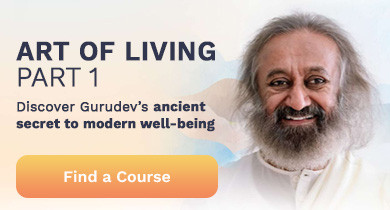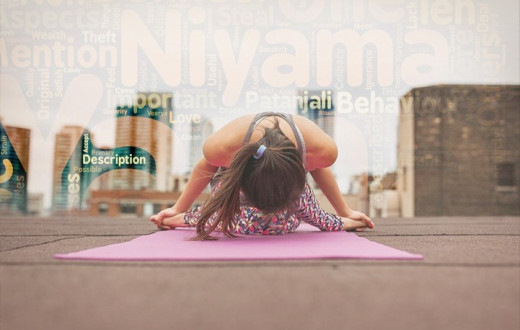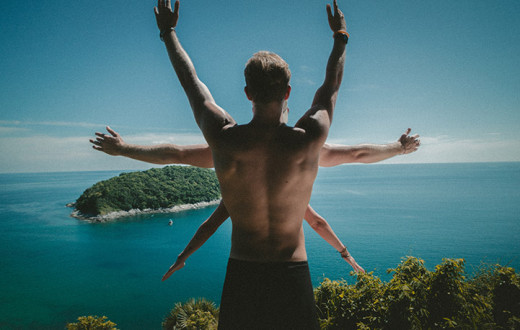By Elizabeth Herman | Updated: March 11, 2022
Yoga includes the healing science of hand gestures or yoga mudras. Try these 4 easy mudras to deepen your yoga and meditation practice today!
Did you know that 70 percent of adults living in the U.S. reported that yoga and meditation are very effective methods to manage stress? And these numbers are pre-pandemic. With more and more people turning to yoga and meditation everyday, this is a great time to deepen your practice!
To many people, yoga means poses (asanas), but yoga also includes breathwork and meditation. Breathing practices increase the awareness of the relationship between the body and the mind while reducing stress. Meditation allows the practitioner to experience deep rest, sharpen their mind, and increase their overall sense of well-being.
Even with all of these benefits, there’s still much more to yoga!
In addition to these popular practices, there’s also a lesser-known, more subtle branch of yoga. This is the science of mudras. Let’s dive in!
What are mudras?
Mudra is a Sanskrit term that basically means “gesture”. A mudra may involve the whole body or just a simple hand position. Here we are focusing on hand gestures. A simple gesture like bending, crossing, extending, or touching the fingers with other fingers in specific ways can effectively influence our body and our mind.
Mudras have been used for thousands of years to positively influence both the mind and body. They affect our nervous systems by stimulating nerve endings in the hands. According to the science of reflexology, nerves in the hands and feet are connected to nerves throughout the entire body. Manipulating these peripheral nerves can interrupt stress signals in other parts of the body. Though these hand gestures don’t use the same kind of deep pressure associated with reflexology, the principles are similar.
There are literally hundreds of mudras. They provide comprehensive physical and mental benefits, ranging from relief of headaches and anxiety to improving circulation and digestion. They can also add a whole new depth to our yoga experience.
How do mudras work, according to Ayurveda?
According to Ayurveda, diseases are caused by various imbalances in the body. These imbalances are caused by lack or excess of any of the five basic elements in nature. The five elements are air, fire, water, earth, and ether.
Each of our five fingers relates to one of these five elements. Touching and holding our fingers in specific ways can help balance these elements, either by increasing or decreasing their prevalence in our systems.
Here is how each finger relates to the 5 elements
Thumb - Fire element
Index finger - Air element
Middle finger - Space element
Ring finger - Earth element
Pinky finger - Water element
Each of these five elements serves a specific and important function in the body. The fingers essentially work as electrical circuits do. The use of hand gestures affects the flow of life force, also called pranic energy, and further affects the balance of the five elements. They can often facilitate healing.
How do mudras work, according to yoga?
Ancient yogis used their bodies as a means of calming the mind and experiencing deeper states of awareness. Mudras are powerful tools for accomplishing this.
Each type of mudra is thought to have a specific effect on the body and mind. These effects are experienced by the practitioner when blockages are cleared from energy centers and energy channels. Some mudras come naturally to us. By touching our fingers to our hands, we can affect our attitude and perception. The inherent energetic power of mudras can heal the entire body.
Practitioners can also use hand gestures in combination with yogic breathing exercises. This helps enliven the flow of the life force in the body, the nerves, and the subtle network of nadis (energy channels).
Mudras also create a subtle connection with the brain. They influence our unconscious reflexes, and in turn, balance and redirect energy in our bodies. This change affects our sensory organs, glands, veins, and muscle tendons.
The special significance of the ring finger
The ring finger holds the energy of the earth in the body. Sealing the ring finger to the thumb nourishes and amplifies the energy of the earth element within the body. Hence, the ring finger connects with the root chakra (first chakra).
Deepen your practices with these hand gestures
It is best to practice mudras in a sitting position. Some options include sitting cross-legged, kneeling and sitting on your heels, sitting in lotus posture, or sitting in a chair. There’s no need for discomfort, as that would distract us from the practice. Ideally, light and gentle victory breathing (ujjayi breath) accompanies the simpler mudras.
Let's explore four mudras that can help you prepare for your meditation practice
Chin mudra, also known as Gyan mudra
Chinmaya mudra
Adi mudra
Merudanda mudra
In each of these yoga mudras, take at least 10-12 slow Ujjayi breaths. Preferably, you will also want to practice on an empty stomach. Watch this video to learn how to do Ujjayi breathing.
The gesture of knowledge (Gyan mudra)
Instructions:
Hold the tips of the thumb and index finger together lightly while extending the other three fingers without exerting any pressure
Keep the three extended fingers as straight as possible without tensing them
Place your hands on your thighs (near the knees), facing upwards
Keeping light attention in the chest area, breathe lightly in Ujjayi
Observe the flow of breath and its effect
Benefits:
Directs the flow of prana (life force energy) in the chest area
Improves memory retention and concentration
Improves sleep patterns
Increases energy
Alleviates lower backache
The gesture of awareness (Chinmaya mudra)
Instructions:
Hold the thumb and index finger together lightly in a ring
Curl your three remaining fingers into the palms of your hands, and hold them there loosely
Place the hands on the thighs with palms facing upwards
Keeping light attention between the eyebrows, take deep, comfortable victory breaths (Ujjayi)
Observe the flow of breath and its effect
Benefits:
Improves the flow of energy in the body
Aids digestion
The first gesture (Adi mudra)
Adi mudra is known as the first gesture because babies naturally make this mudra.
Instructions:
Place the tip of your thumb at the base of the small finger
Curl the remaining fingers over the thumb, forming a light fist
Place your palms facing upwards on the thighs
Keeping light attention on the two sides of the head/brain, breathe gently in Ujjayi
Observe the flow of breath and its effect
Benefits:
Relaxes the nervous system
Helps to reduce snoring
Improves the flow of oxygen to the head
Increases capacity of the lungs
The spine gesture (Merudanda mudra)
Instructions:
Keeping your fists gently closed, extend your thumbs outside of your palms to make the thumbs-up sign
With the thumbs pointing upward, place the pinky finger sides of the fists on the thighs
Breathe in light Ujjayi breath, with light attention on your spine
Benefits:
Calms the mind
Releases stress-relieving hormones from the thymus gland
Relieves lower back pain
Improves focus and concentration
Expands the lungs
Purifies the blood
Prana mudra, Vayu mudra and Surya mudra
Three more mudras that are also popular are Prana mudra, Vayu mudra, and Surya mudra.
Prana mudra looks similar to the peace sign- thumb holding down the ring finger and pinky finger, but the middle finger and index finger are straight. This hand gesture improves the flow of prana (life force energy) in the body.
Vayu mudra looks similar to Gyan mudra, but instead of your thumb and finger gently touching, the thumb holds the index finger down. Vayu mudra balances the air element in the body, guiding the flow of prana.
To do Surya mudra, place your hands on your thighs, palms facing upwards, fold your ring finger and hold it with your thumb, making sure the ring fingertip touches the root of your thumb. Keep the other three fingers extended. This gesture helps to regulate the metabolism. Anyone with an imbalance relating to the fire element should seek the advice of an Ayurvedic practitioner.
Take your meditation and yoga practice to the next level
When you follow-up your yoga asana routine with powerful mudras, breathwork, and meditation, you will bring a lot of depth to your practice. To learn how, join a free online session with a live instructor, and experience guided breathwork and meditation now. You will also learn about SKY Breath Meditation, which has helped millions of people worldwide to reap the deeper benefits of yoga, and take their practice to a next level. Are you ready for it?
Enjoy your mudra practice!
Elizabeth Herman is a long time meditator, a trained yoga teacher, and a PhD in English, with concentrations in Rhetoric and Composition, and Literature. She offers writing support to clients, teaches locally, and volunteers for a better world.





























